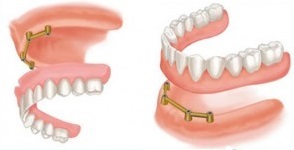
روش نمایان کردن ایمپلنت در جراحی
2015-09-29
The anatomy of implant failures
2015-09-29This article describes the many failures and complications that can occur when using implants to support restorations. Most of these failures can be prevented with proper patient selection and treatment planning. Implant failures can be largely classified into four main categories: 1) loss of integration, 2) positional failures 3) soft tissue defects, and 4) biomechanical failures. Each of these will be discussed with examples to illustrate the problem
Different areas of failure are discussed –
Operator factors, patient factors and anatomic factors pre-disposing to failure are presented –
Most failures can be prevented with proper treatment planning –
Loss of integration
This is an infrequent occurrence with multi centre studies and several meta-analyses indicating 93% survival rates of dental implants.1, 2 There are indications that implants are more successful in the mandible than the maxilla.2 In addition, it has also been shown that implants are more successful in host bone than grafted bone.3 Though it is disappointing for the patient and the clinician to have an implant fail to integrate, the morbidity on failure is low when cylindrical implants are employed. Often a re-attempt at implant placement with a larger diameter implant or a bone graft followed by an implant will allow successful osseointegration . This type of failure occurs mostly before loading the implant with the definitive restoration and minimal resources have been spent on the prostheses. The major clinical problem in these situations is delay of completion of treatment and patient management. When non cylindrical implants are used, more trauma is caused on removal; this can lead to severe hard and soft tissue loss. Reconstruction of these defects may require multiple surgeries. Placement of non cylindrical implants should be avoided for this reason







